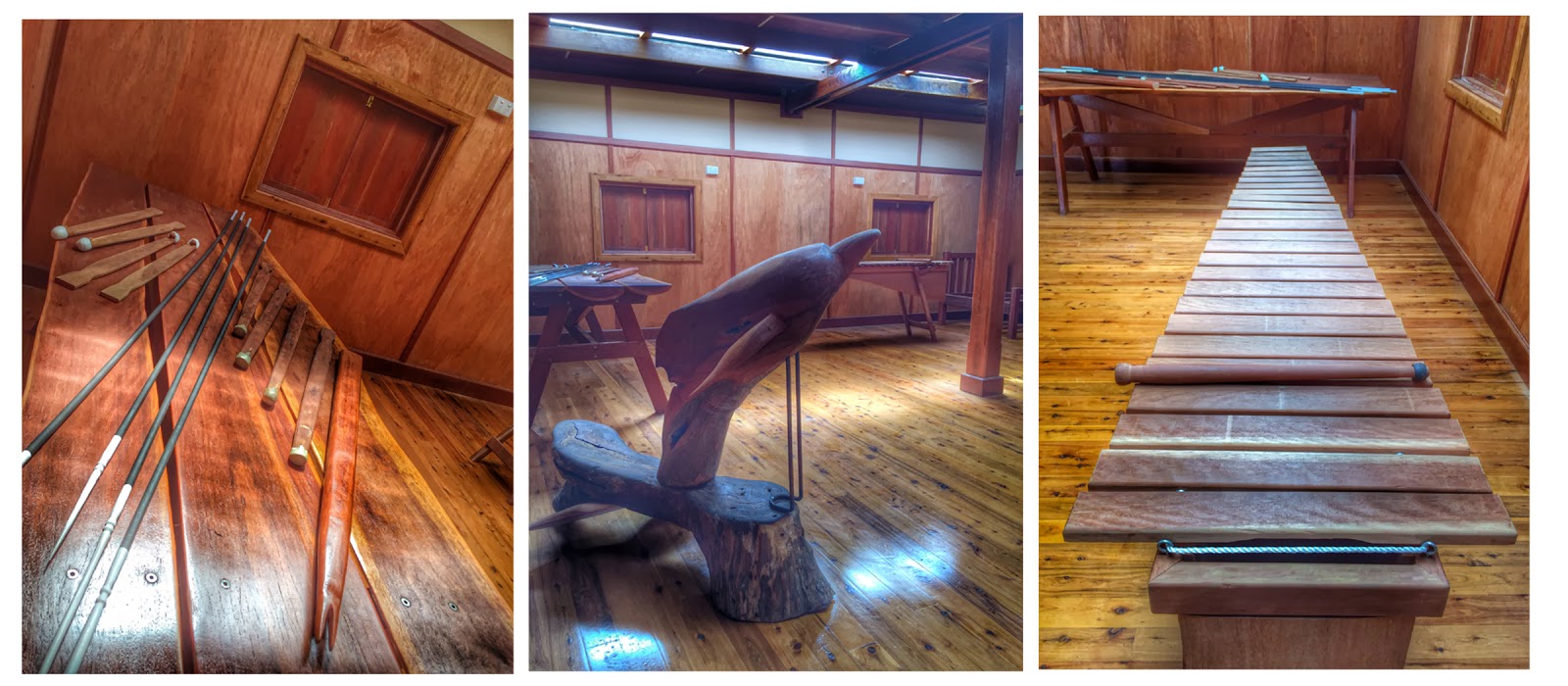 |
| Recreation centre, Yirrkala. |
Pre-colonisation, the nation, now known as Australia, was home to several hundred Indigenous Nations, each with its own language, identity and its own lore. Over the last 225 years, Australia, to its detriment, has seen a significant loss of these languages—every year more are lost and the knowledge with them. Christine Nicholls, among others, has written extensively about this – you will find some articles on The Conversation (and you can see my somewhat heated debate with an eighty-four year old man).
Language is intrinsic in gaining a deeper understanding of a given culture and being in Arnhem Land has brought this to light. I will put my hand up and state that I am a complete novice when it comes to speaking Yolngu Matha (Matha being a term to cover the variety of Yolngu languages spoken in Arnhem Land), but what I am is willing to learn. Not only would learning Yongu words allow me to understand the culture at a more significant level, it would also provide me with the skill to converse with Yolngu people and connect with them on a personal level, therefore enabling me to immerse myself in the culture more richly. Some aspects of culture and language do not translate into English and like understanding Yolngu moieties, understanding Yolngu Matha can help close this gap. Of course, there are some aspects of Yolngu Matha that I am not privy to, and nor should I be, but that doesn’t lessen the importance of understanding the traditional tongue.
There is also an element of authority and dominance in enforcing the use of English in a place where it is not necessarily the first language of many—many Yolngu people speak two, three, sometimes four languages, English being their fifth.
I hear stories of peoples’ travels to France and how unaccommodating the French are to people who butcher their language—and I think, well, why not? Why as English speaking Westerners do we presume that everyone should speak our language? Where is the harm in learning the basics, at a minimum?
I have been schooled multiple times in the past week on speaking Yolngu words properly and it is through these lessons that I have come to understand the dominant nature of English. As all readers, I put my prior understanding of letter sounds to the forefront of my mind and pronounce words with this mindset—and I couldn’t be more wrong. There are some combinations that are uncommon in English, others that have simply been written down in a poor phonetic translation and further still, others have been pronounced incorrectly to me in the first instance.
There is a skill in adopting a new language, any new language, and it has huge cognitive benefits. I have become increasingly aware of the shape and movement of my tongue when forming new, well any words, really. And, yet, there seems to be a certain level of taboo, denial and outright disrespect in learning Indigenous languages. Languages that hold a beauty as iconic as the sound of a twanging banjo; lyrical slices of cake that grab you by the gullet and can tell you so much more about this country called Australia.
A romanticised fascination is incited about learning European languages and it strikes me that at the prospect of overseas travel we will go and pick up a copy of Lonely Planet with a language guide, but we are don’t consider learning languages available in our own backyard. Odd, no?



